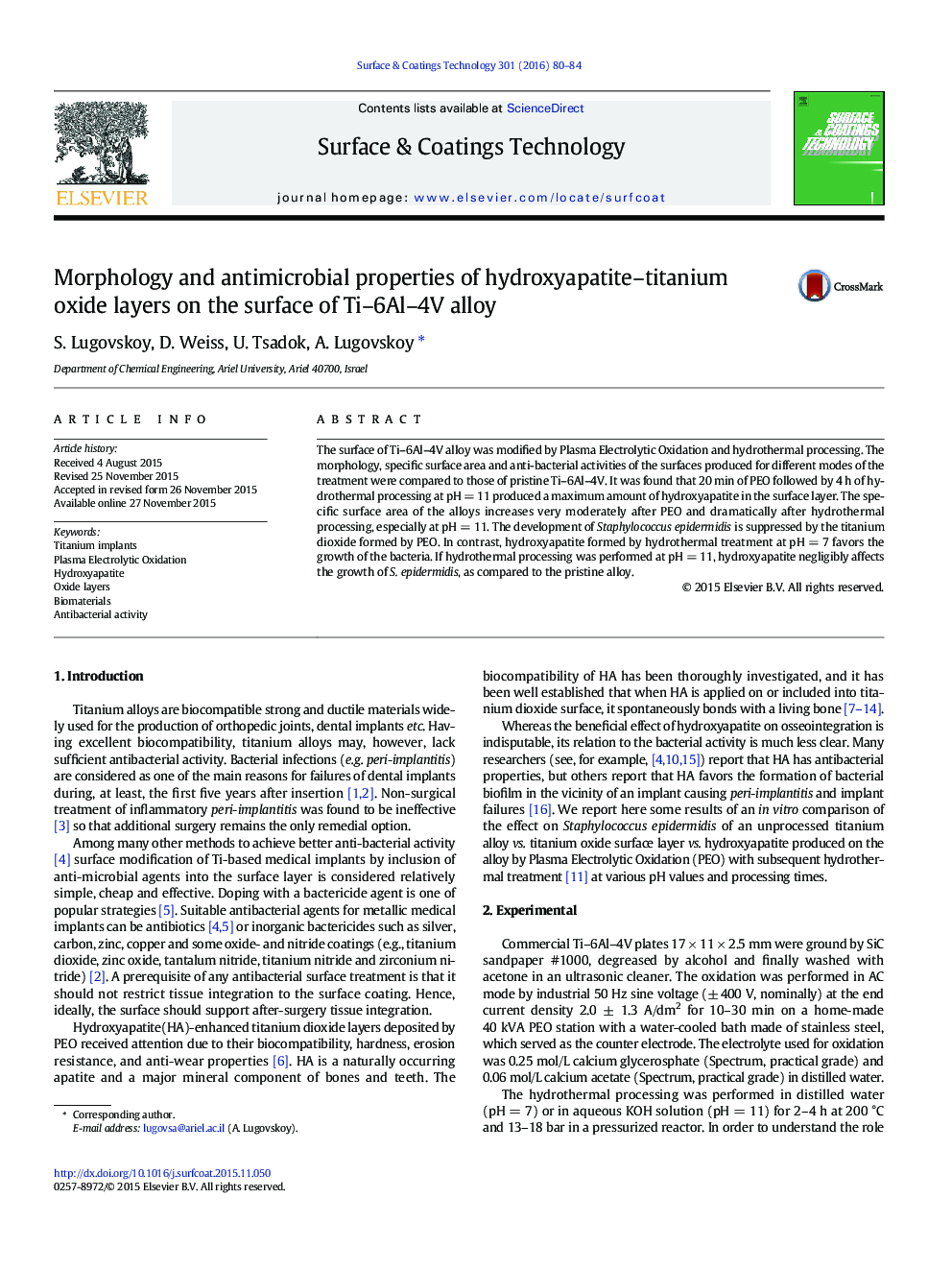| Article ID | Journal | Published Year | Pages | File Type |
|---|---|---|---|---|
| 1656311 | Surface and Coatings Technology | 2016 | 5 Pages |
•Titania–hydroxyapatite layers may have antimicrobial activity.•Titania without hydroxyapatite indeed suppress the development of Staphylococcus epidermidis.•If titania contains hydroxyapatite, the development of Staphylococcus epidermidis is favored.
The surface of Ti–6Al–4V alloy was modified by Plasma Electrolytic Oxidation and hydrothermal processing. The morphology, specific surface area and anti-bacterial activities of the surfaces produced for different modes of the treatment were compared to those of pristine Ti–6Al–4V. It was found that 20 min of PEO followed by 4 h of hydrothermal processing at pH = 11 produced a maximum amount of hydroxyapatite in the surface layer. The specific surface area of the alloys increases very moderately after PEO and dramatically after hydrothermal processing, especially at pH = 11. The development of Staphylococcus epidermidis is suppressed by the titanium dioxide formed by PEO. In contrast, hydroxyapatite formed by hydrothermal treatment at pH = 7 favors the growth of the bacteria. If hydrothermal processing was performed at pH = 11, hydroxyapatite negligibly affects the growth of S. epidermidis, as compared to the pristine alloy.
